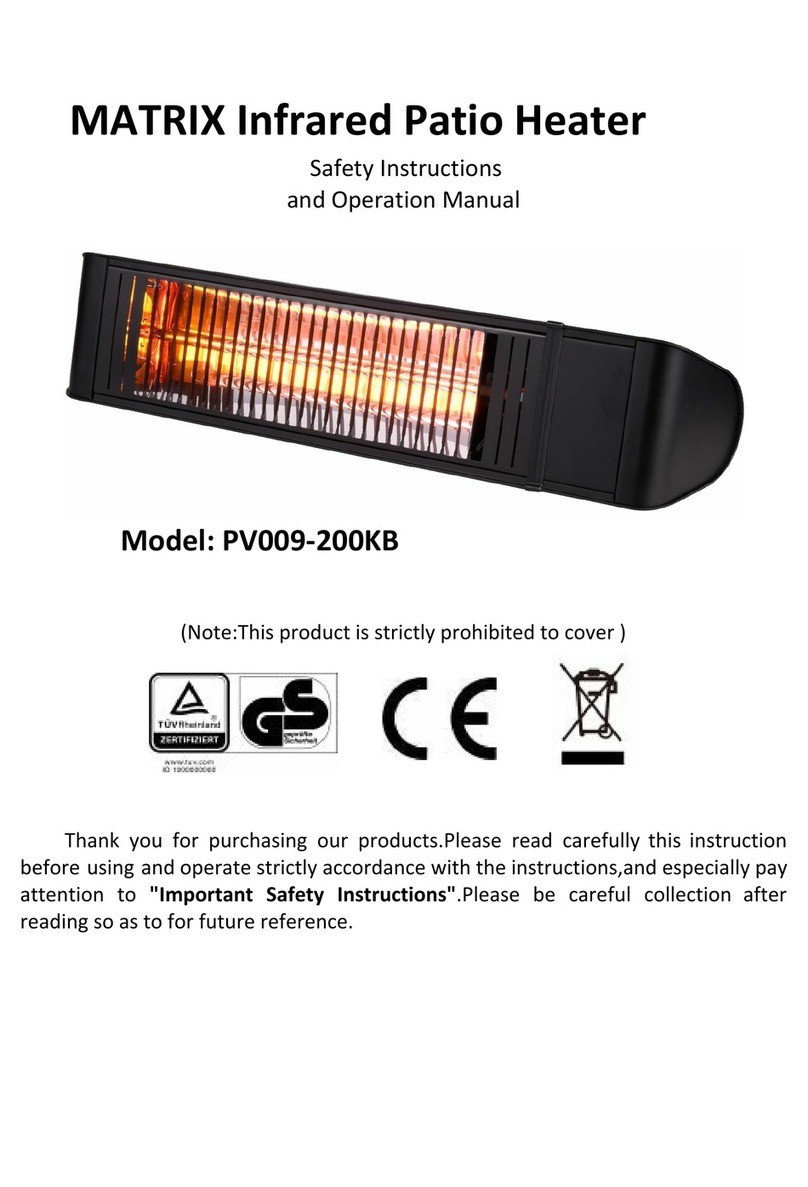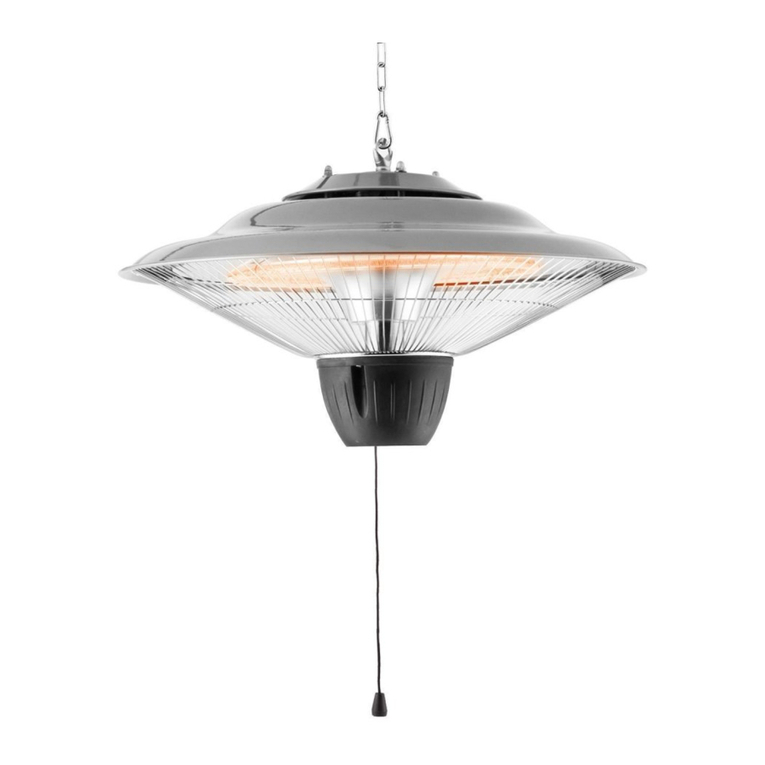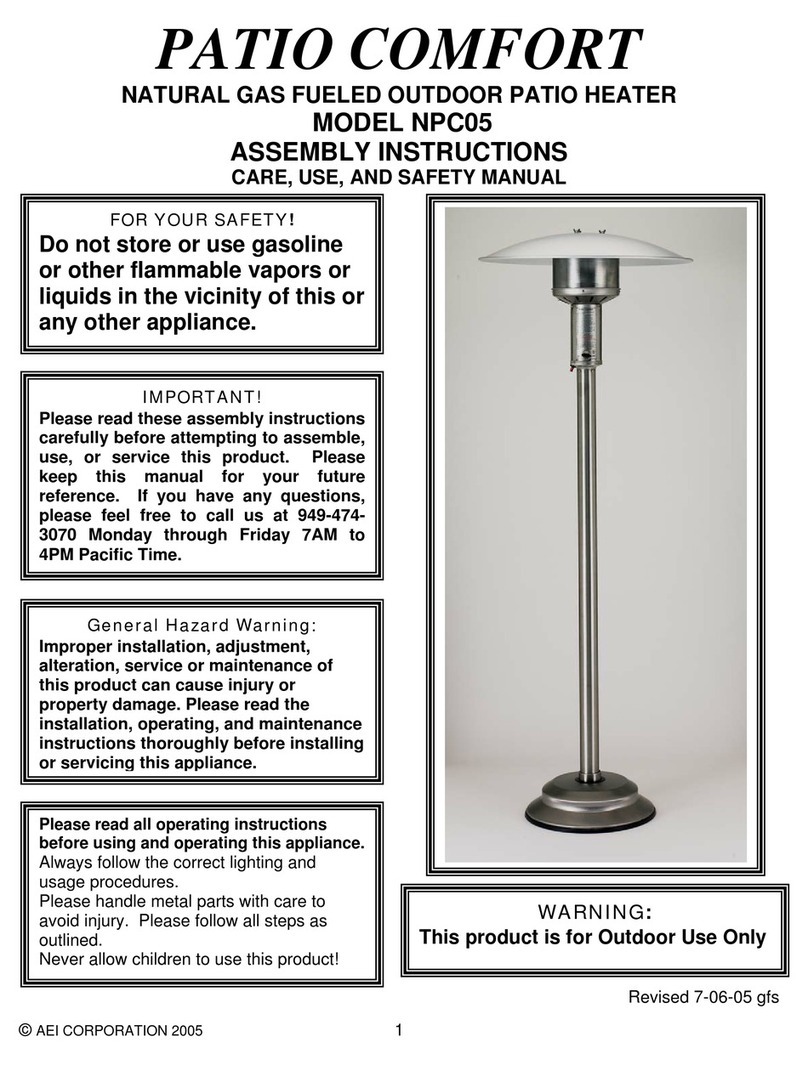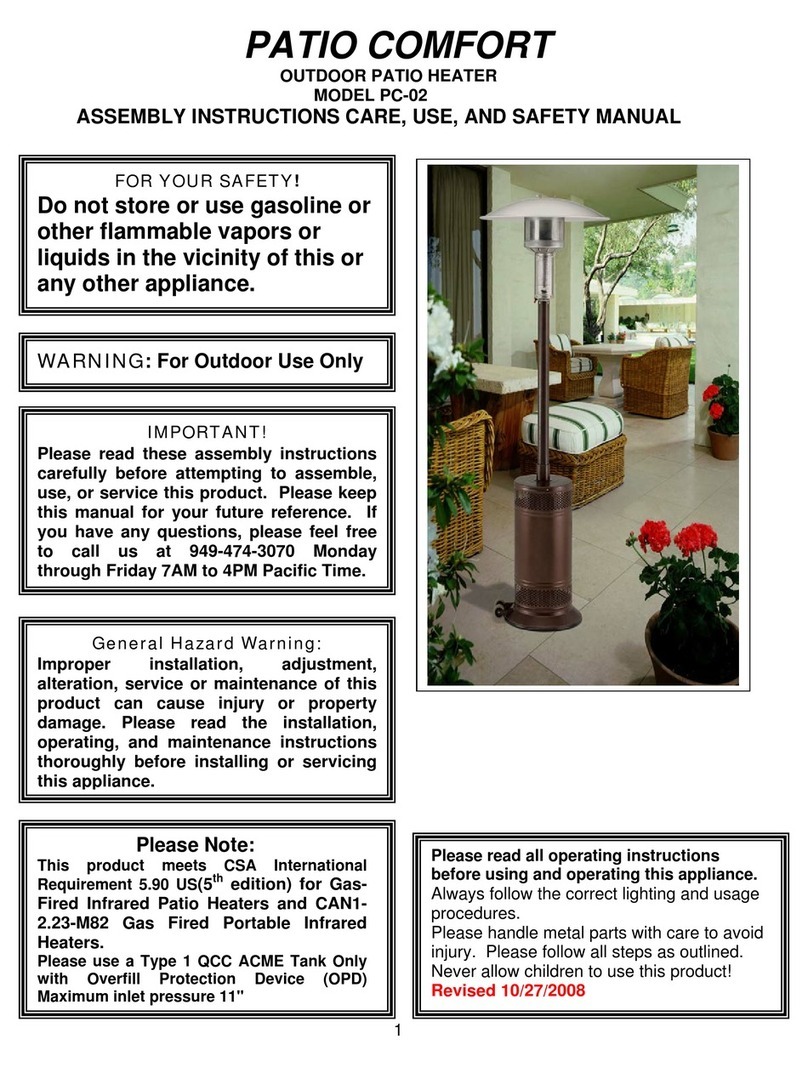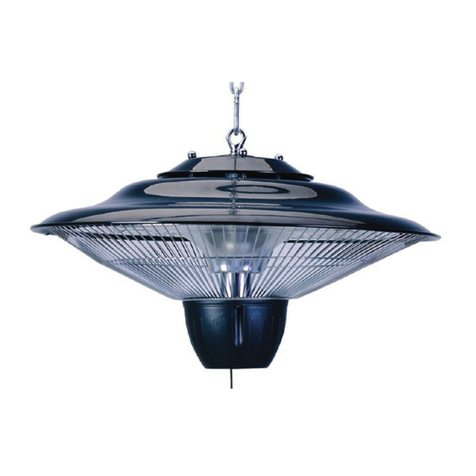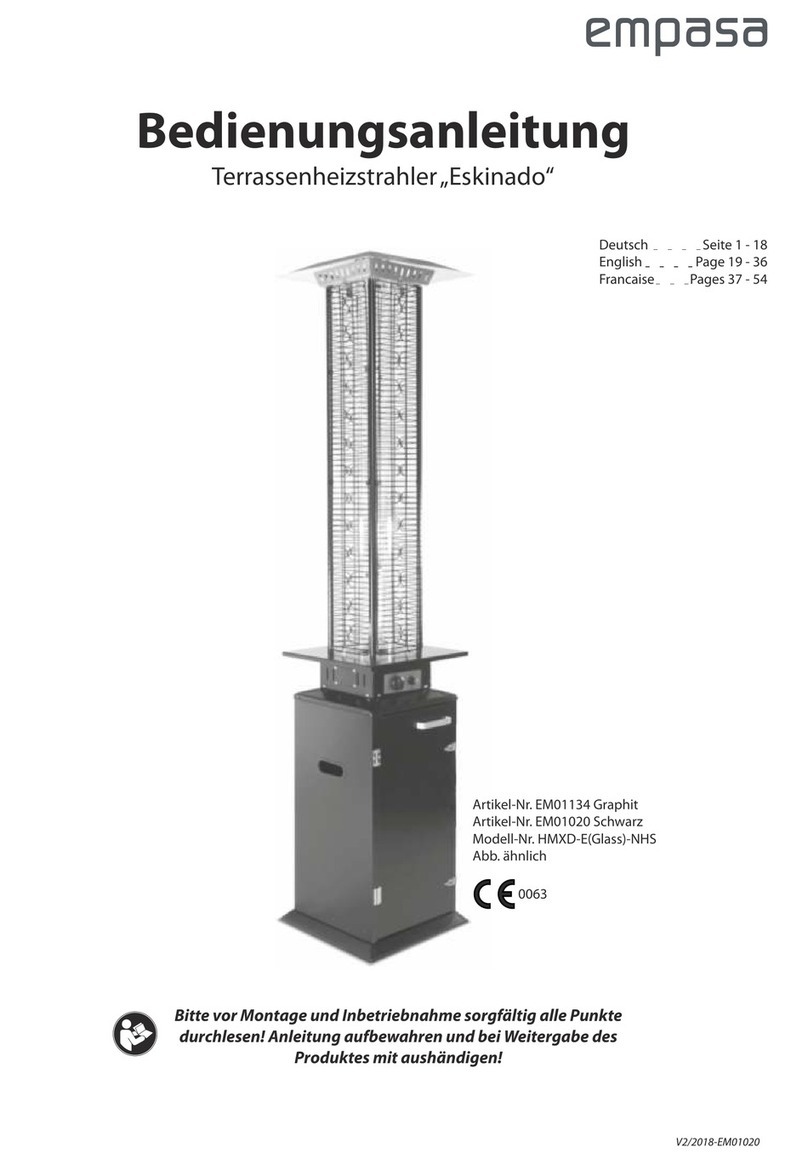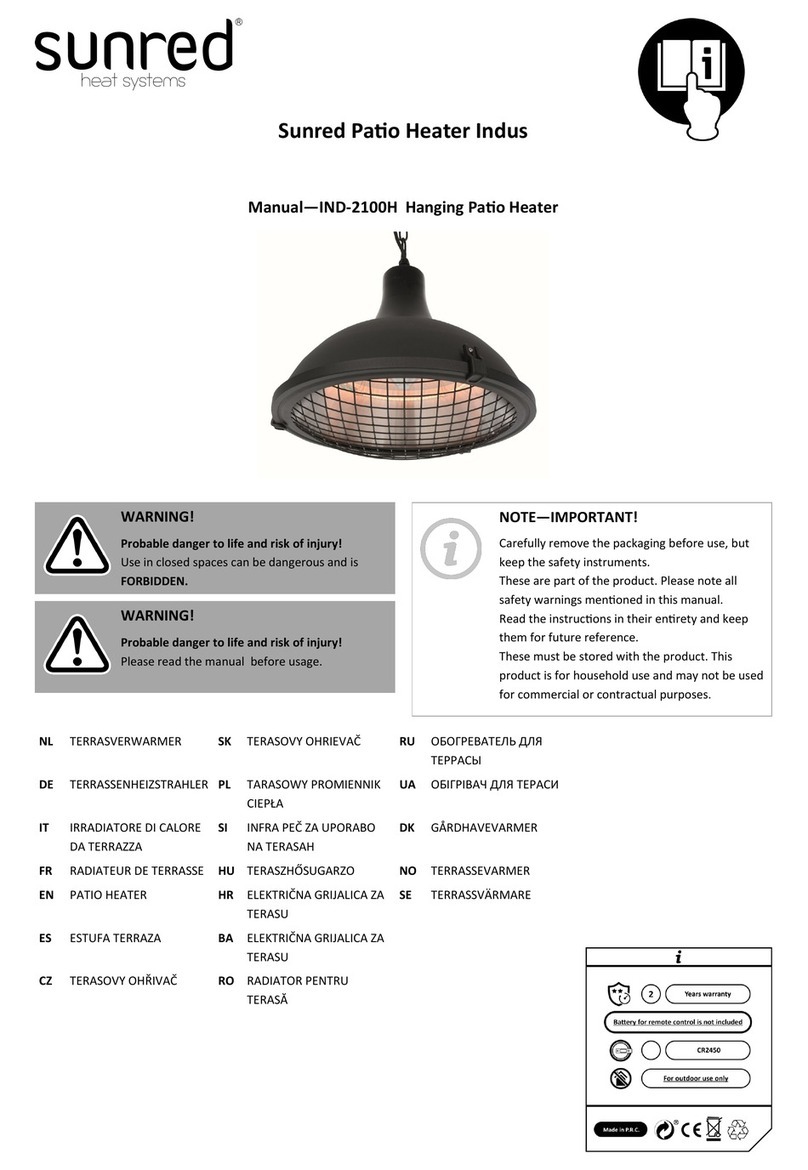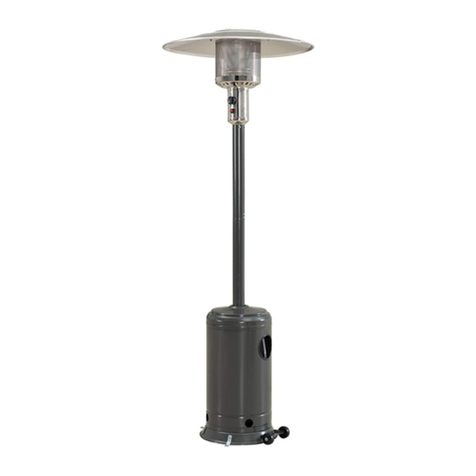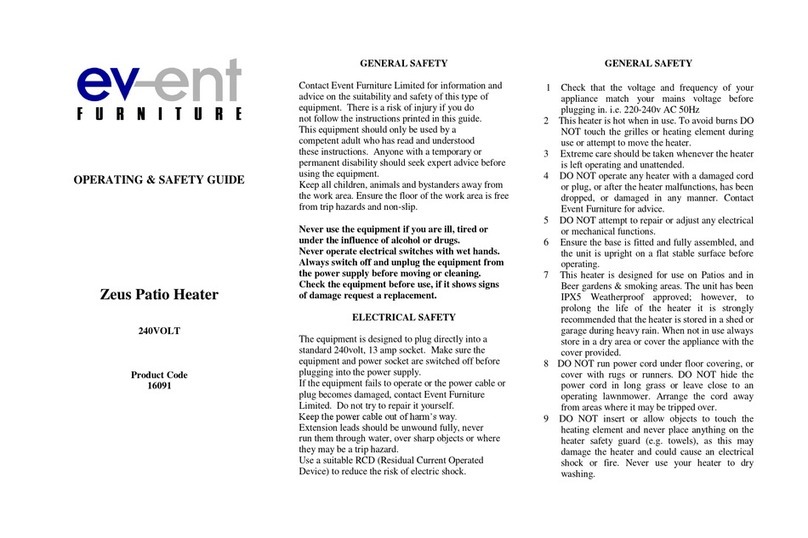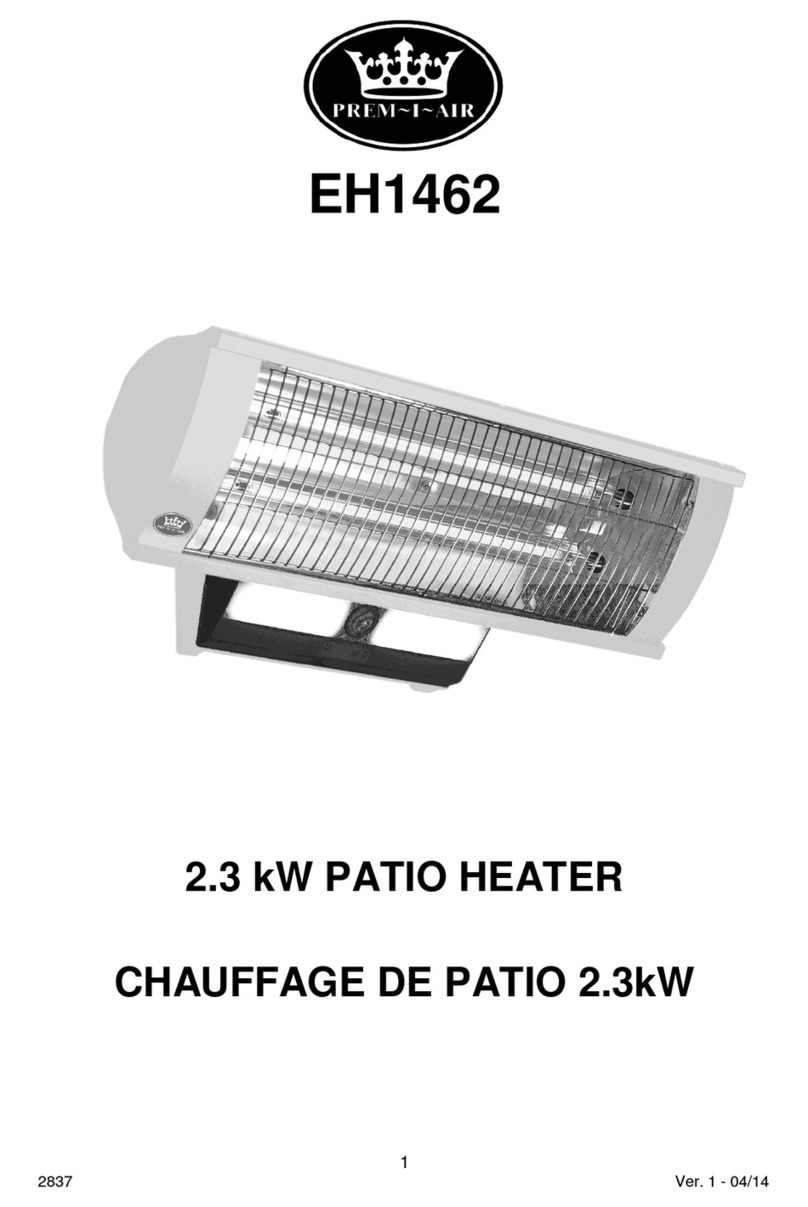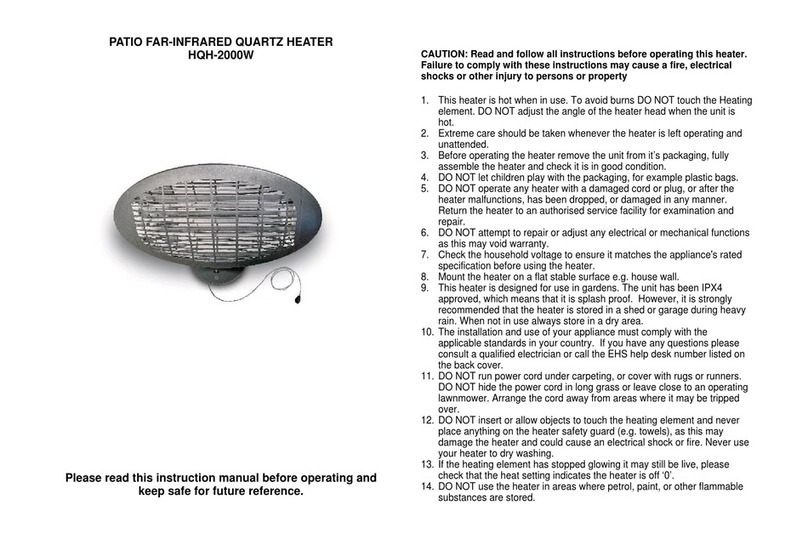
Technical Data
Fuel: LPG (Propane) Only
Heating: Each
Patio Comfort
heater will cast a
10-12 foot circle of sun like radiant heat. Heat
output will vary based on “wind chill” factor, outside
air temperatures, altitude, prevailing wind
conditions, and location of heater.
Gas Cylinder: A Type 1 “ACME” QCC with Overfill
Protection Device (OPD) Cylinder is required but not
included. All new cylinders are empty and should be
filled by an authorized fueling station or cylinder
exchange facility.
After the main burner is lit the burner will radiate
heat in a 360-degree circle. The circle of warmth
will vary dependent on outdoor temperatures, wind
chill factor, area protection, and other variables.
The average heating area is approximately a 10-foot
ring of warmth. The reflector will return upwardly
radiated heat downwards. On the initial lighting
please allow heater to burn a few minutes to burn
off machining oils used in the production of the
heater.
Pressure: The unit is equipped with an LPG
Regulator Preset to 11.0 Inches Water Column. This
specially designed regulator must be used with this
appliance. Maximum supply inlet pressure 100 psi.
Minimum inlet supply pressure 5 psi.
Fuel Consumption: 40,000 BTU Input /Hour
Cylinder will operate unit for approximately 9 - 10
hours on “ON” setting. Longer burn times can be
achieved by reducing fuel input at heater valve
control knob.
Orifice Size: 1.90 mm
Weight: 95 pounds or 43 Kilograms not including
cylinder and fuel. Tank plus fuel weighs 40 lbs.
Overall Height: 95 inches 233 cm
Reflector Diameter: 34 inches or 86 cm
Ignition System: Push Button Piezo with Pilot
Flame
Fasteners: 304 Series Commercial Grade Stainless
Steel
Materials: Reflector: Anodized Aluminum – Major
Components: Series 304 & 403 Stainless Steel.
Cast aluminum base and post. Heavy-Duty Cast
iron base. Paint is mechanically bonded
Polyurethane powder coating. Emitter 304 SS
Other features: 100% Safety Shut Off Valve
No Electrical Connections Required
Constant Pilot
Completely Self- Contained
Safety Latch on French doors.
Function of Heater
Infrared heaters utilize virtually 100% of the
fuel/energy they consume to produce clean draft-
free warmth. Infrared heaters do not waste
precious energy by trying to heat the air. Infrared
heat works like the radiant rays of the sun and will
directly heat objects near them such as people,
tables, chairs who in turn will absorb the heat and
reflect it. The push button Piezo ignition system is
used to light the pilot flame first. After the
thermocouple device allows gas to flow to the main
burner head you may then safely engage the main
burner system by turning valve control knob to “ON”
Setting.
Please note:
Upon first using the heater, not using
the heater for an extended period, or after
attaching a newly filled cylinder it might be
necessary to depress the control knob at the
“PILOT” setting up to two to three minutes to
purge the air in the fuel lines before the PILOT
flame will ignite. Please be patient, this is all part
of the safety system that has been designed for
your protection.
Assembly Tips
For your convenience and safety the
Patio
Comfort
outdoor patio heater has been almost
completely assembled. The burner head and valve
assembly have been fire tested for added safety.
Assemble all nuts and bolts loosely at first. Tighten
all connections after the completion of the assembly
process. This eases your work and increases the
overall stability of the appliance. Before using the
heater be sure to check all connections with a
solution of soap and water. More on this later in the
instructions. Never use a flame to check for
leaks!
When starting the assembly process please take all
of the parts out of the box and check if anything is
missing. Please check parts with the following parts
breakdown. Even though we exercise extreme
quality control procedures occasionally we will have
a missing part or a part may have been damaged in
transit. If anything is missing, please contact
your
Patio Comfort
dealer or call us directly
at 949-474-3070. We will immediately help
you. The same holds true on any questions you
might have on assembly or operation. When in
doubt please ask, we’re at your service.
7


